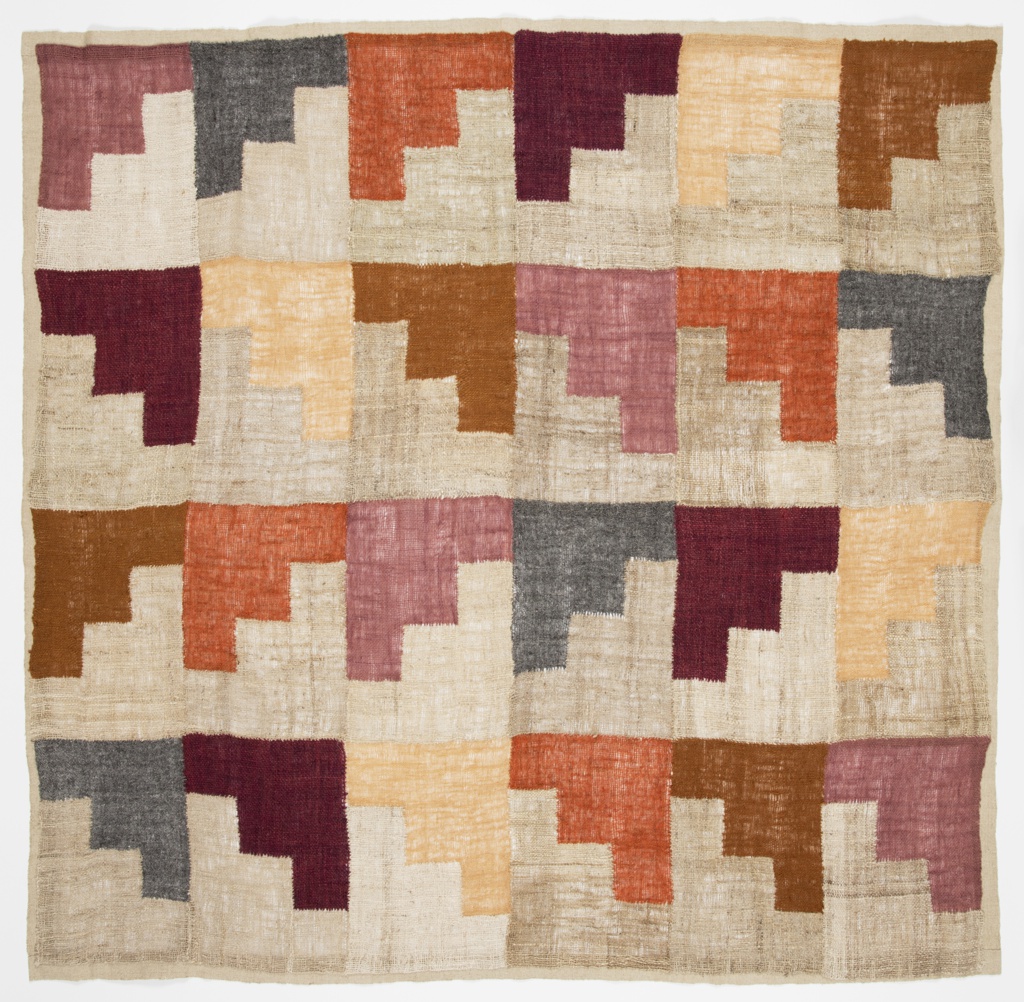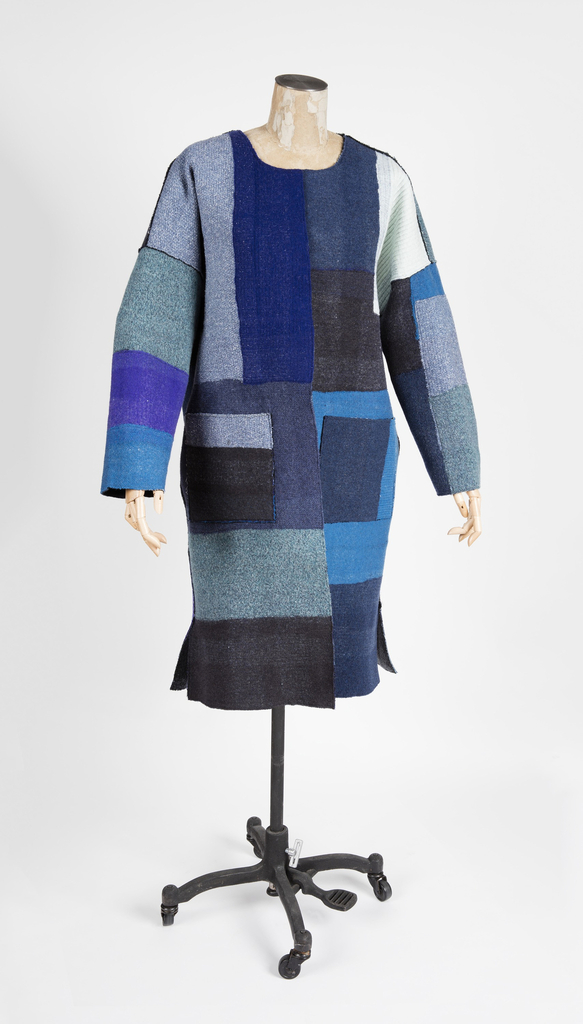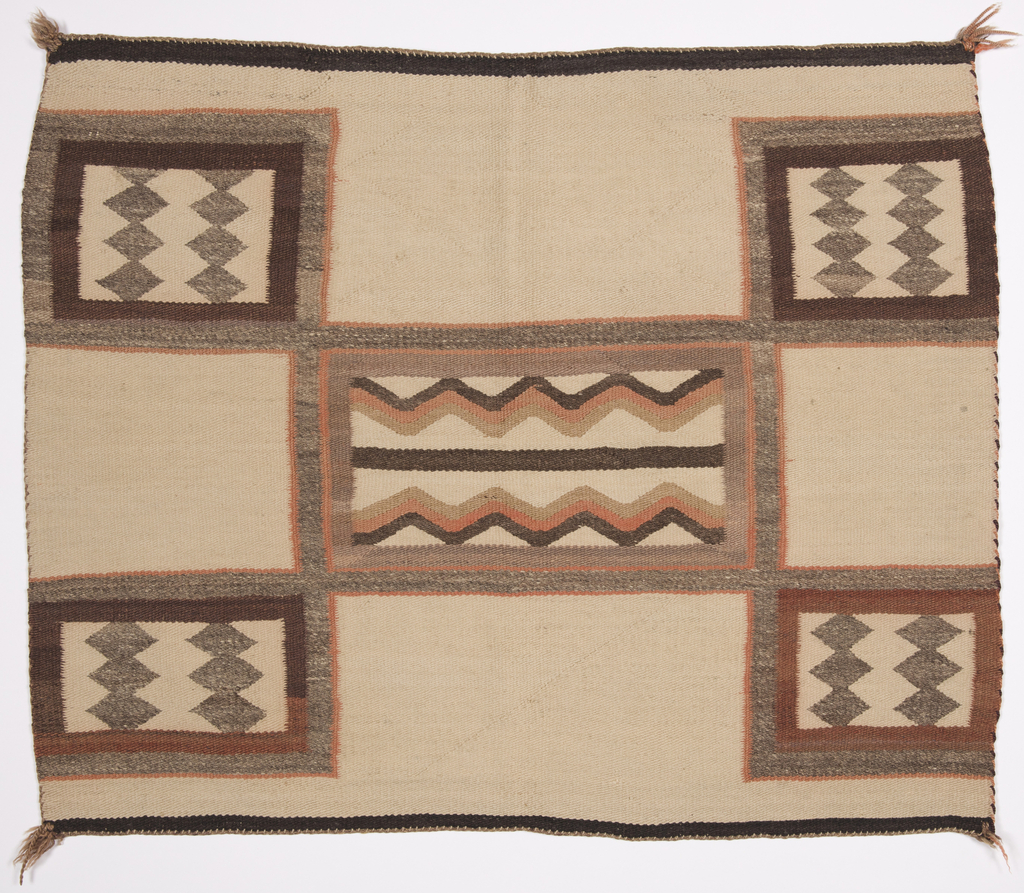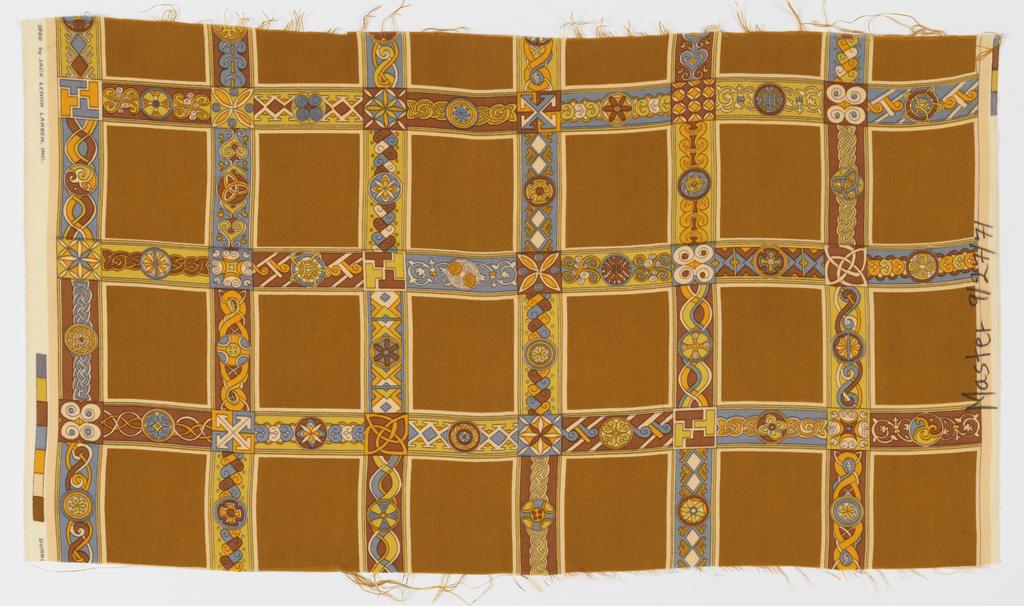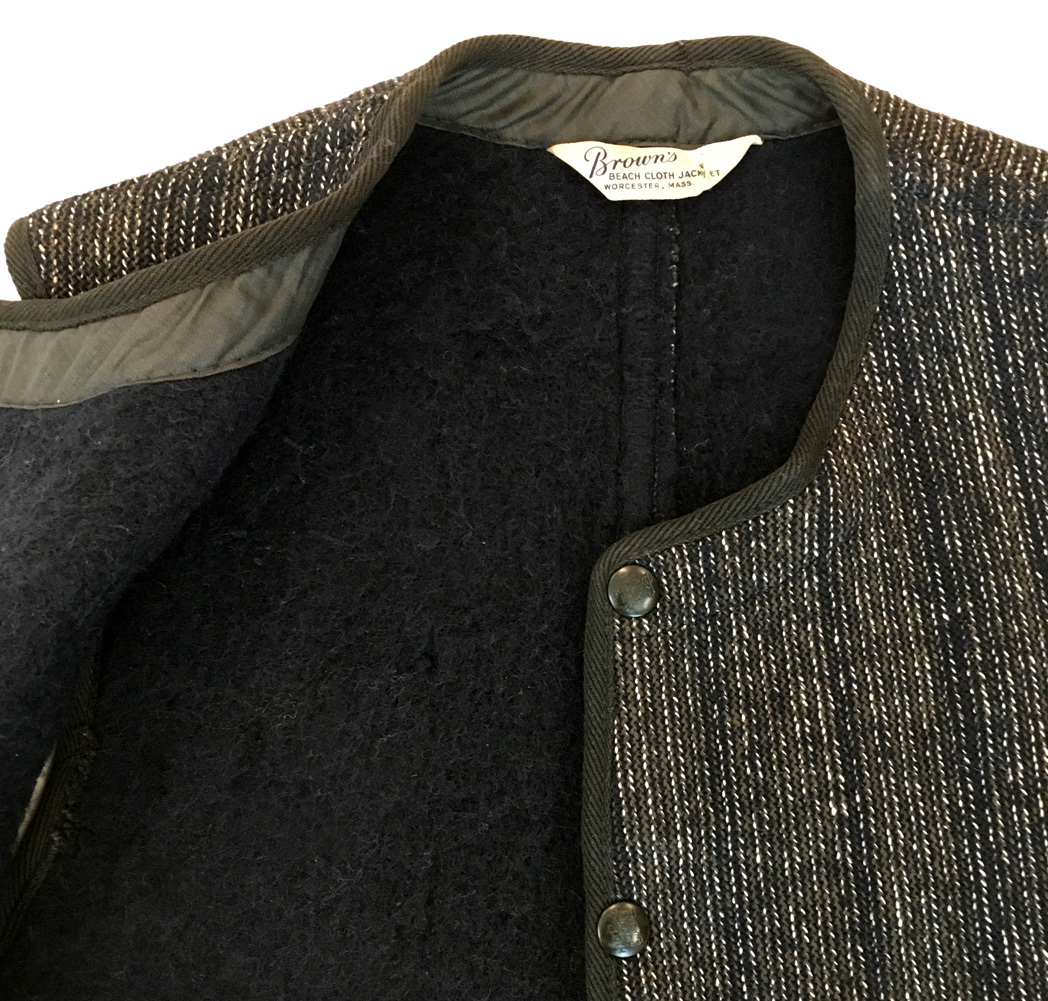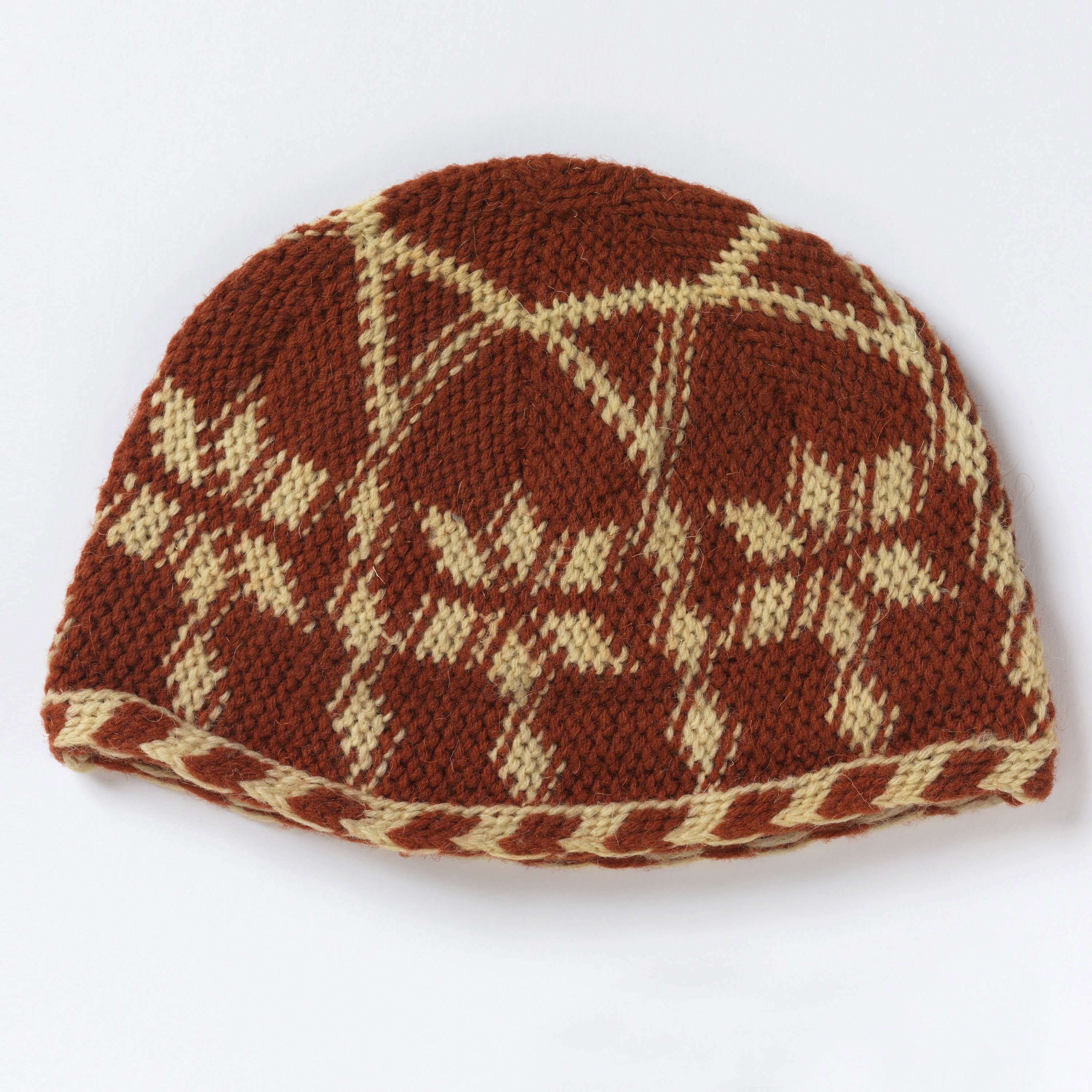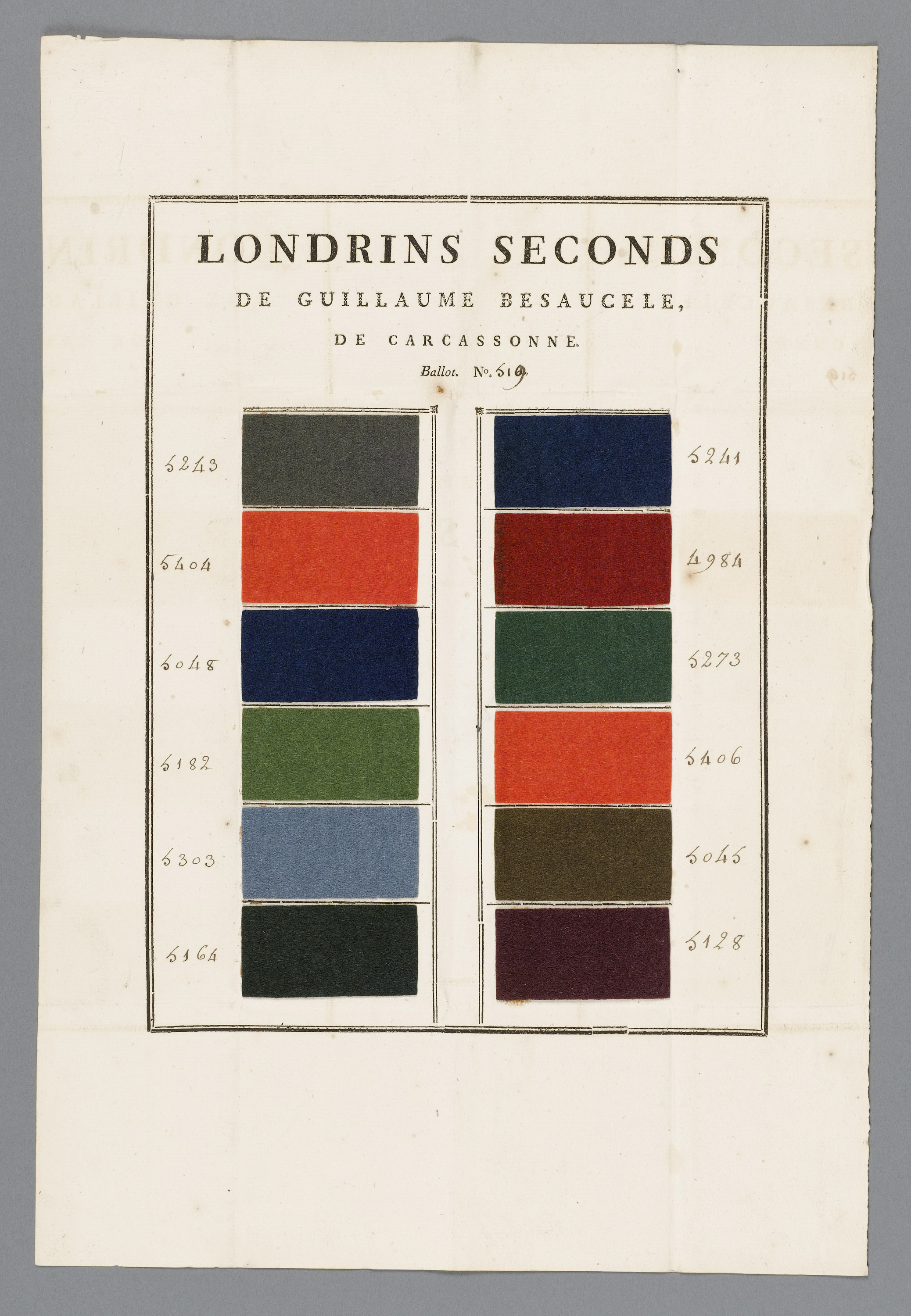Paired sets of stepped blocks in harmony and balance echo an ancient process. James Bassler (American, b. 1933), in his work Six by Four II, incorporates an aesthetic of pure color through the interlacing of warps and wefts in a special way. By changing the colors of each block, linked one to the other, thread...
As part of Eileen Fisher’s numerous sustainability efforts, the company committed to taking back used Eileen Fisher garments from its customers. Since 2009, with almost no promotion of the initiative, over 600,000 garments were returned. About 40% are still usable; they are cleaned and repaired in the company’s recycling centers in Irvington, NY and Seattle...
This single saddle blanket features five rectangles, each filled with the zigzag and diamond patterns the Navajo adapted so successfully from the Mexican serape. While in the 1870s and 80s these motifs were paired with exuberant use of color, by the 1880s some traders, such as J.L. Hubbell and C.N. Cotton, began to push for...
In 1965, Jack Lenor Larsen made the first of sixteen trips to Ireland at an invitation from the Irish Export Board to develop fabrics for interiors. Using a mill specializing in worsted wool and a Donegal handweaving operation, he produced worsted damasks and tweed and satins with vegetable-dyed screen prints, which make up his 1969...
Magali An Berthon discusses the development of the market for garments made from reclaimed wool.
This wool cap, probably intended for a man, was made in the first half of the 20th century by the indigenous inhabitants of Morocco, the Amazigh people (also called the Berbers), who make up 40-60 percent of the population and have a language and culture distinct from Arabs. Amazigh textiles were mainly produced by women,...
Early in the eighteenth century, France was eager to imitate British success in exports of woolen textiles, especially to the Levant, an area roughly defined as a region of the eastern Mediterranean including Turkey and Egypt and points in between. By 1720, the French had vastly improved the quality of their woolens, and a system...
Dutch designer Claudy Jongstra recently showcased her tapestries of raw wool and silk here in New York at the United Nations. A participant in Cooper-Hewitt’s 2009 Fashioning Felt exhibition, Claudy has a unique design process that is committed to sustainability, biodiverisity, and the preservation of natural and cultural heritage. Claudy keeps her own sheep, her...
The trend toward organic goods and ethical trade is spreading in the fashion world with a wealth of new initiatives to connect designers to sustainable resources and materials. Hear from Summer Rayne Oakes, Co-founder/CEO of Source4Style — a B2B marketplace that allows designers — both fashion and interior — to search, compare and purchase more...
Yesterday I attended the kick-off event for Pioneers of Change, a festival of modern Dutch design, fashion, and architecture that is currently underway on Governor’s Island. Presented to celebrate the 400-year history of Dutch-American friendship, Pioneers of Change features installations by a number of leading Dutch designers in eleven former Officers’ houses at Nolan Park...
I had the pleasure of meeting recently with Ton Vriens, a Dutch documentary filmmaker and journalist who, through his foundation Turtle Tree, is working with women in Haiti to develop a felt-making co-operative, with the goal of achieving economic and social independence for the members of the self-governed group. Haiti is one of the poorest...
1. I was delighted to see that Lerival – Furniture by Architects is carrying Morehead & Morehead’s brilliant Felt Stool (1). This is currently produced in synthetic automotive felt, which is the only reason I didn’t include it in Fashioning Felt. Otherwise its simple folded form says, in brief, everything I love about felt. ...
This program brings together two designers featured in Fashioning Felt who approach incorporating felt into architectural use from different starting places but with beautiful and unexpected endings. Both designers collaborate with architects to create decorative and functional felt interventions. Kathryn Walter works primarily with industrial felt while Claudy Jongstra uses raw wool and natural dyes....
Filmed by Chrtstine Martens. Made with the support of the Asian Cultural Council Fashioning Felt presents an extraordinary range of felt. From two-dimensional carpets to three-dimensional environments, each work reveals the virtuosity of both the material and the designers. The exhibition and book focus on felt that has been produced by traditional hand- or machine-felting...
Making the Palace Yurt felts at the studio of JA Felt Centralia, Washington, 2008. Fllmed by Paul Moore. Courtesy of JA Felt.
